Step 1: Learn about Heart Failure
Heart failure (HF) is a condition in which a heart is unable to pump sufficiently, or does so at higher filling pressures, to meet the needs of the body. One of the common symptoms is congestion, or build-up of too much fluid in tissues and veins. Specifically, congestion takes the form of water retention and swelling (edema), both as peripheral edema (causing swollen limbs and feet) and as pulmonary edema (causing breathing difficulty), as well as ascites (swollen abdomen) and liver enlargement.
10
million
people have heart failure in Europe.1
1 in 5
The lifetime risk of developing heart failure2

TYPES OF HEART FAILURE
HF is generally divided into two different syndromes based on Ejection Fraction (EF), a measurement of how well the heart is pumping blood. Ejection fraction represents the proportion of blood pumped out of the heart during a single contraction and is given as a percentage, with the normal range between 50 and 75%.
| Healthy Heart | Heart Failure with Preserved Ejection Fraction (HFpEF) EF≥50% | Heart Failure with Reduced Ejection Fraction (HFrEF) EF<40% |
|---|---|---|
| In a healthy heart, the left ventricle (LV) and left atrium (LA) relax to fill with blood from the lungs. Once filled, the LV pumps the blood to the body. | HFpEF occurs when the muscles of the left atrium (LA) and ventricle (LV) become stiffer and are unable to relax normally. As a result, blood cannot easily exit the LA into the LV with each heartbeat, causing high pressure inside the lungs and left heart chambers. | HFrEF occurs when the heart walls become thinner and lose their ability to contract effectively. As a result, the heart cannot pump with sufficient force to push enough blood out of the LV and into circulation, causing high pressure inside the lungs and left heart chambers. |
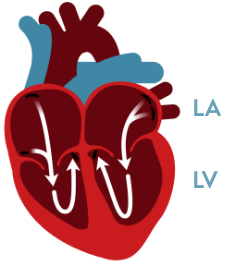 | 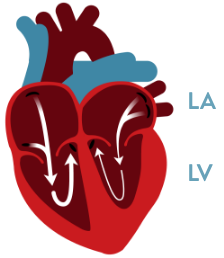 |  |
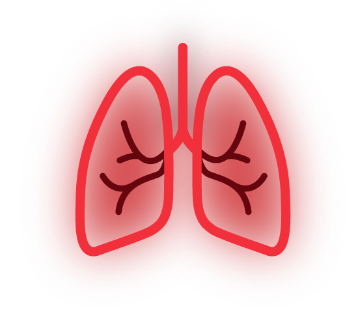
In all forms of HF, the high pressure in the lungs and left side of the heart cause shortness of breath and fatigue. These are common symptoms of worsening heart failure and often result in hospitalizations.
More than half of heart failure patients have HFpEF3
Patients with HFpEF are frequently hospitalized and often struggle with daily activities because of breathlessness, fatigue, and depression. For many, these symptoms drastically reduce their quality of life.

SYMPTOMS OF HEART FAILURE

Shortness of breath during daily activities

Having trouble breathing when lying down

Weight gain with swelling in the feet, legs, ankles, or stomach

Generally feeling tired or weak with limited or inability to exercise
HFpEF TREATMENT OPTIONS
Patients with HFpEF have few treatment options. To date, treatment for HFpEF has primarily been limited to lifestyle changes and medication that aim to relieve symptoms. Despite receiving these treatments, many patients still have symptoms.
Healthy Lifestyle Changes
- Maintaining or losing weight
- Being physically active
- Monitoring your blood pressure
Medications
- Diuretics to prevent fluid build-up
- Medicines to lower blood pressure or manage associated conditions
- SGLT2i
Despite healthy lifestyle changes and the use of medications, many patients
continue to experience symptoms and as a result, are frequently hospitalized.
BUT NOW, A NOVEL TREATMENT CALLED
ATRIAL SHUNTING IS AVAILABLE TO HELP YOU.
Step 2: Learn more about Atrial Shunting

WHAT IS AN ATRIAL SHUNT?
An atrial shunt is a small metal scaffold placed in the heart to create a passage between the upper chambers. It is a permanent implant designed to decrease pressures in the heart and lungs and therefore reduce breathing difficulty and other heart failure symptoms that often result in hospitalization.
Atrial shunts are used to treat patients with chronic heart failure who are experiencing symptoms due to high pressures in their left atrium (the chamber of the heart that receives oxygenated blood from the lungs). In these patients, the high pressure in the left atrium causes blood to back up into the lungs, causing shortness of breath and fatigue.
Atrial shunting safely relieves these high pressures by creating a passage between the two upper chambers of the heart. This passage allows the heart to direct blood from the left to right atrium when pressure increases, thereby lifting restrictions and reducing HF symptoms during activity.
CORVIA® ATRIAL SHUNT SYSTEM
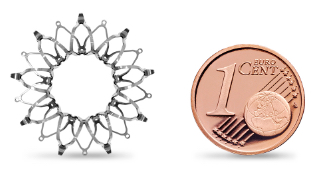
The Corvia Atrial Shunt is a novel, minimally invasive cardiac implant for symptomatic HF patients, namely those with HFpEF. It is the most widely studied and implanted shunt for heart failure, with over 600 patients treated worldwide.
The Corvia Atrial Shunt is implanted via a minimally invasive procedure. During this procedure, an interventional cardiologist or electrophysiologist inserts a catheter (small tube) in a vein near the groin to access the heart. This catheter is then used to create a very small passage in the heart wall between the right and left atria where the shunt is placed. The newly created passage allows blood to flow from the high pressure left atrium to the lower pressure right atrium. As a result, the pressure in the left side of the heart and the lungs decreases, and heart failure symptoms are reduced.
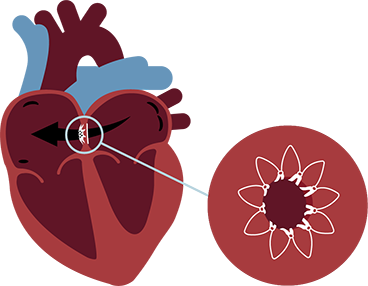
WATCH HOW IT WORKS

Learn more about atrial shunting for people with symptomatic heart failure
Step 3: Heart Failure Symptom Check – do you have HFpEF symptoms?
Have any of the following symptoms IMPACTED the quality of your life?
- Breathlessness
- Fatigue
- Difficulty conducting daily activities
(walking, climbing stairs, etc.) - Frequent urination
- Unable to sleep lying down
- Anxiety and depression
- Buildup of excess fluid in body (swelling)
If you are experiencing heart failure symptoms, it is important to talk to your doctor about all of your treatment options, including atrial shunting. To help with the discussion, please download, print out, and complete the doctor discussion guide. This guide will help your doctor understand your symptoms and remind you of important questions to ask to see if atrial shunting might be right for you.
This discussion guide can help you talk to your doctor about your heart failure and atrial shunting.
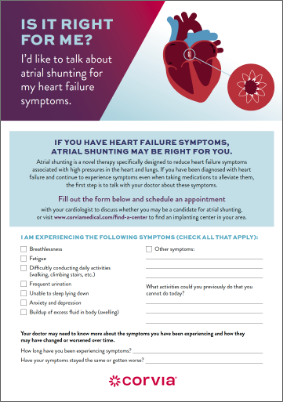
Step 4: Find a doctor near you
Use our site finder to identify doctors in your area that offer atrial shunting. Contact the doctor’s office to set up a consultation and learn if atrial shunting is right for you.
FOR EXISTING CORVIA ATRIAL SHUNT PATIENTS
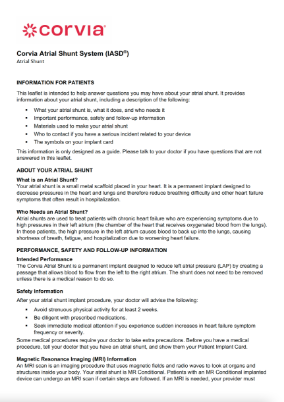
If you have already received the Corvia Atrial Shunt and want more information about your implant, you may download the Patient Information Guide which is available in multiple languages.
- European Heart Network. Heart Failure and Cardiovascular Diseases – A European Heart Network Paper. A Eur Hear Netw Pap. 2019;(April):1-7.
- Bui AL, Horwich, TB, Fonarow, GC. Epidemiology and risk profile of heart failure. Nature Reviews Cardiology, 2011;8(1): p.30.
- Owan TE, Hodge DO, Herges RM, et al. Trends in prevalence and outcome of heart failure with preserved ejection fraction. N Engl J Med. 2006;355:251-259.
- Unpublished 2-year data from REDUCE LAP-HF II on file at Corvia Medical.
